The M16: The Most Controversial Rifle Ever? Man, oh man, you just gotta love the endless debates in the world of consumer products. In the automotive industry, you have Ford vs. Chevy. In the world of handguns, you have 9mm vs. .45 ACP, Revolver vs. Semiautomatic, and Double Action vs. Single Action vs. Striker-Fired. And in the world of modern-day combat rifles, you have M16 vs. AK-47 and M16 vs. M14. (Yes, I’m counting military-issued weapons as “consumer products; the U.S. Department of Defense is after all, a consumer, n’est-ce pas?)
(Subscribe to Our YouTube Channel Here. Check out More 19FortyFive Videos Here)
Of all the small arms ever issued to the U.S. Armed Forces, none — not even the Beretta M9 pistol — has generated as much heated controversy over the years as the M16 rifle AKA “The Black Rifle” AKA “The Mattel Gun” AKA “Black Plastic Fantastic.”
With a word count of 650 to 1,000 words per my Editor, you can only cover so much history for a tool that’s 60+ years old, so for the sake of brevity, we shall limit this particular discussion to the original war that the rifle was drafted for (so to speak), the Vietnam War.
M16 Looking Good On-Paper
The M16’s predecessor, the 7.62x51mm NATO (.308 calibre) M14, had become the standard-issue rifle for the U.S. military in 1959, except for the U.S. Air Force Air Police/Security Police, who stuck with the M1/M2 .30 carbine for the time being. The M14 was rugged, reliable, accurate, and powerful but was also plagued by perceived problems for infantry usage in the jungles of Vietnam: the heavy weight and lack of controllability during full-auto fire. Plus, the long distance dialing (so to speak) capabilities of the M14 were deemed unnecessary for the most part in those Vietnam jungles. In short, overkill.
Meanwhile, the .30 carbine was dependable, lightweight, and user-friendly on the one hand — a “hoot to shoot,” to quote Guns Magazine reporter Mike “Duke” Venturino — but on the other hand, had developed a reputation for poor stopping power during the Korean War. (Whether or not this reputation was justified is a whole ‘nother story in and of itself.)
On-paper, the M16 rifle would solve all of these shortcomings. Compared with the M14, the M16 carries more rounds in a more lightweight and lower-recoiling platform — 6.37 pounds (2.89 kilograms) vs. 9.2 lbs (4.17 kg) — ergo more bang for the buck.
Meanwhile, vis-a-vis the M1/M2 .30 carbine, the M16’s 5.56x45mm NATO/.223 Remington round offered superior wounding ballistics whilst still remaining lightweight and offering a high magazine capacity (30 rounds) to boot.
It was actually the Air Force that became the first branch of service to adopt the M16 as a standard-issue rifle, doing so in 1963, three years after the weapon had left a positive impression on the legendary USAF Chief of Staff Gen. Curtis E. LeMay; for those of you familiar with Gen. LeMay’s story, you know that he was a hard-ass who wasn’t easily impressed. The U.S. Army Special Forces followed suit shortly thereafter. Meanwhile, Lt. Cdr. Roy Henry Boehm, “The Godfather of the Navy SEALs,” lobbied heavily for the weapon to be issued to his sailors.
M16:Plastic Fantastic…or Hunk of Junk?
By contrast, the conventional Army and the Marine Corps were slow sells on the M16 but relented soon enough. The Army started issuing the “Black Rifle” in 1965. And during that same year, the rifle saw its major combat usage by conventional forces, at the Battle of Ia Drang, the battle immortalized in both the bestselling book We Were Soldiers Once..And Young by Lt. Gen. Harold G. “Hal” Moore & war correspondent Joseph L. Galloway and the filmic adaptation — retitled simply We Were Soldiers — starring Mel Gibson, Sam Elliott, and Barry Pepper (best known as the sniper in Saving Private Ryan).
The reports from then-Lt. Col. Moore and his troops about the M16’s performance in that battle were positively glowing; indeed, Hal Moore explicitly credited the weapon as being a determining factor in how his unit was able to survive and triumph in the battle. Meanwhile, Special Forces troops’ initial after-action reports on the rifle’s performance were highly commendatory.
But then the problems would soon arise.
By the end of 1965, a proverbial tidal wave of reports of severe stoppages and gross malfunctions of the M16 had begun flooding in. The most frequently recurring stoppage was failure to extract fired cartridge cases, typically attributable to a heavily carbonized and rust-pitted chamber. News reporters caught wind of these horror stories, and soon the American public became justifiably outraged over stories of GIs dying in the literal and figurative muck because of hopelessly jammed rifles.
As to the causes of the epidemic of deadly malfunctions, to make a long story short, David Lane of PewPew Tactical boils it down to two main culprits: (1) The U.S. Army willfully used the wrong powder in their ammunition; and (2) The chamber and bore of the barrels were not chrome plated.
To make these matters even mind-bogglingly worse, the Army initially didn’t issue cleaning kits with the weapons, erroneously assuming that the M16 was a “self-cleaning” rifle, in essence, a zero-maintenance weapon! In desperation, the troops used home cleaning kits as a stopgap measure. To quote Mr. Lane: “There are hundreds of documented letters from soldiers and Marines in Vietnam writing to their parents, girlfriends, wives, senators, and congressmen back home and begging for basic supplies. Some of the most common requests? Weapon lubricant, cleaning patches, brushes, picks, and the item most needed of all, bore rods to knock out stuck cases.”
20/20 Hindsight
Several years and thousands of American KIAs and WIAs later, the Army bureaucrats finally pulled their collective heads out of their “fourth point of contact,” problems of the M16 were corrected via the M16A1 and later variants, and indeed, the basic weapon system, in its highly compact M4 variant, remains in service with the U.S. military today. But the stigma of the early M16s’ unreliability still lingers in the minds of many after all these decades.
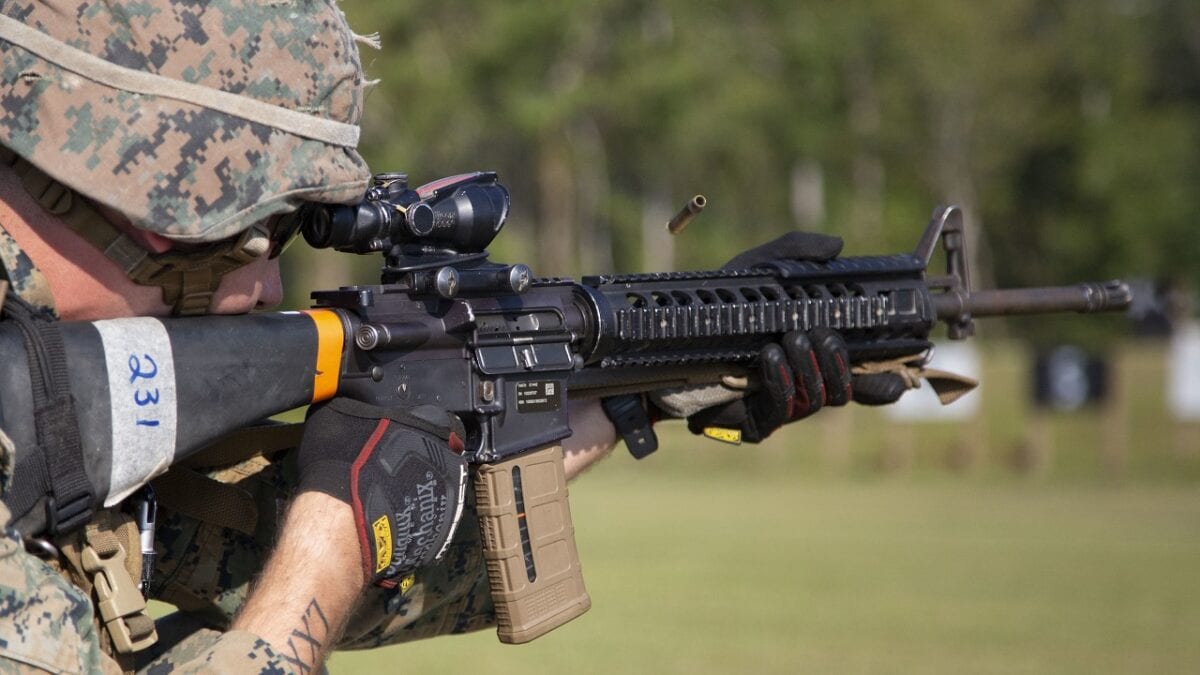
U.S. Marine Corps Lance Cpl. Noah Larose, motor transportation operator, Combat Logistics Battalion 6, 2nd Marine Logistics Group, fires an M16A4 rifle during a rifle marksmanship qualification on Alpha Range at Stone Bay on Camp Lejeune, North Carolina, Oct. 3, 2019. Marksmanship qualification is required once a year for all Marines and consists of two tables that test the individual’s knowledge and skills while operating the M16A4 rifle or the M4 carbine in order to maintain mission readiness. (U.S. Marine Corps photo by Lance Cpl. Ginnie Lee)
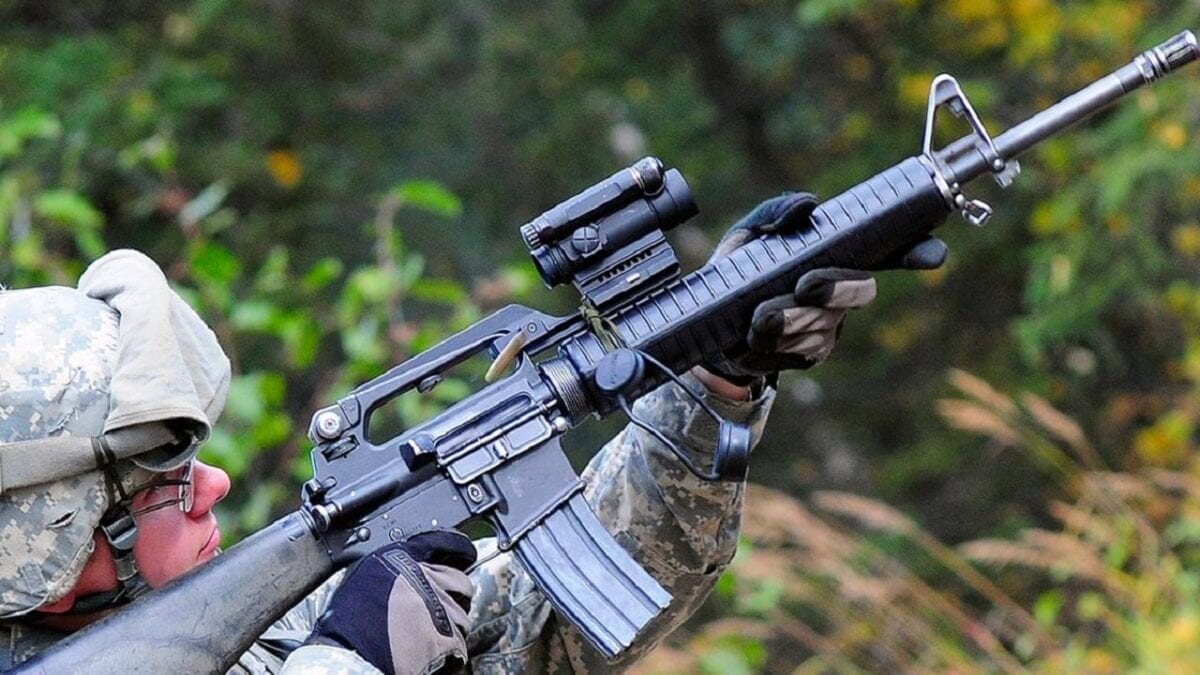
M16A2. Image Credit: Creative Commons.
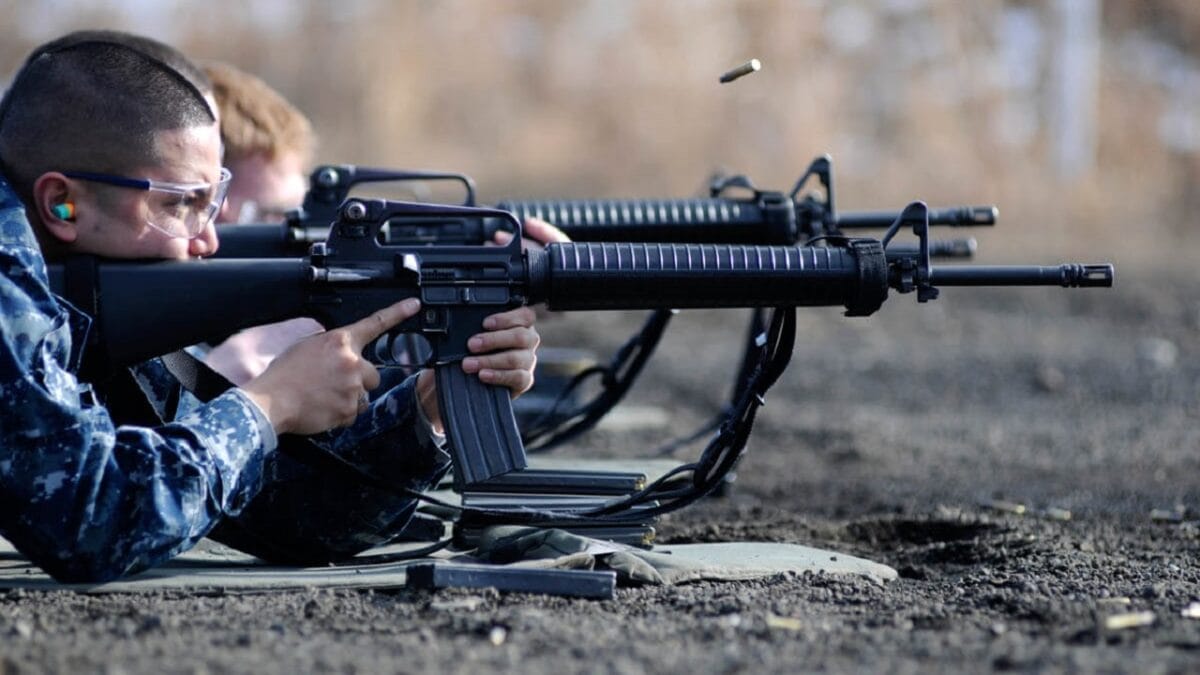
M16A2 rifle. Image Credit: US Army Creative Commons.
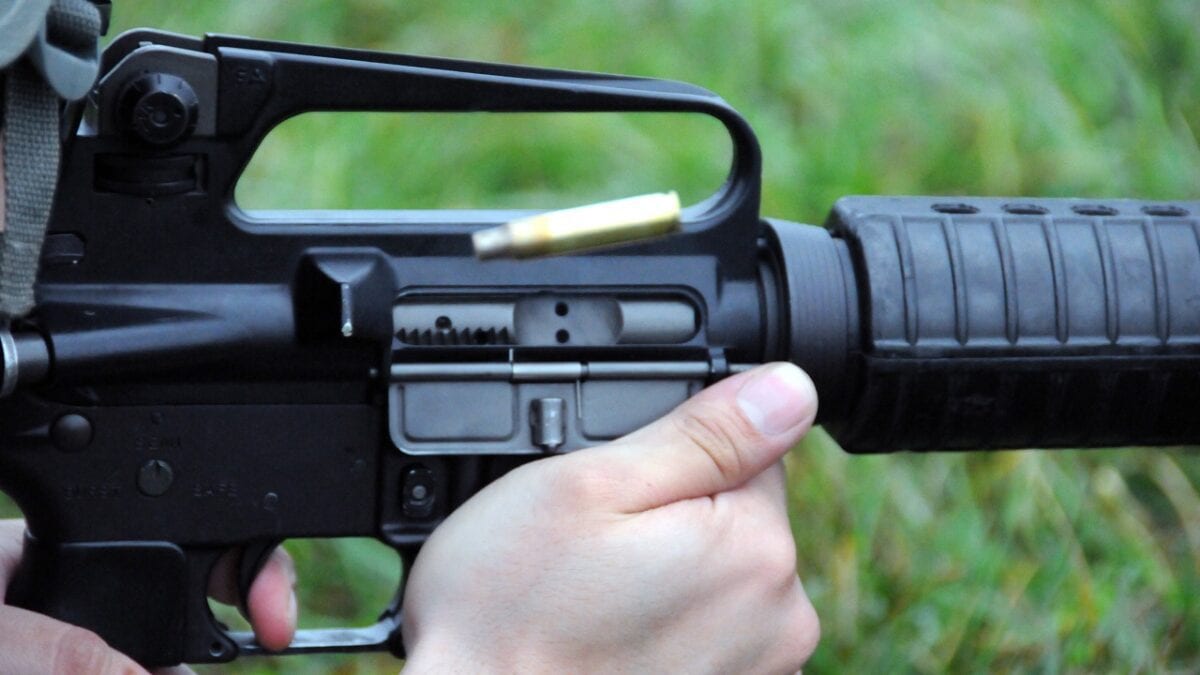
Sgt. Marco Gutierrez, a public affairs specialist from Indianapolis, Indiana assigned to the U.S. Army Reserve’s 350th Public Affairs Detachment, fires his M-16A2 at the range on Camp Atterbury, Indiana Nov. 3. Army Reserve Soldiers qualify on their individual assigned weapon once a year in order to be “mission capable” should they need to deploy.
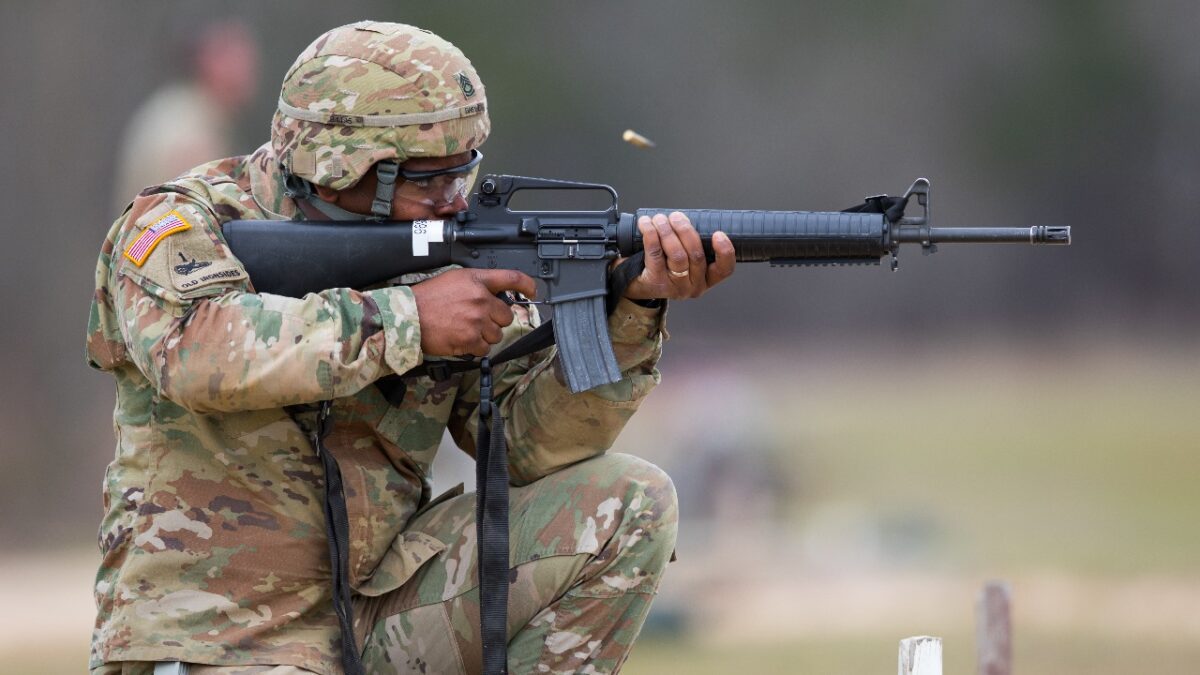
U.S. Army Reserve Sgt. 1st Class Harrison Brewer, G4 Chief Movements Supervisor for the 335th Signal Command (Theater), fires an M16 rifle on a range at Fort Gordon, Georgia, March 8, 2019. Soldiers from the 335th Signal Command (Theater) headquarters completed warrior tasks and battle drills to include weapons qualification, grenade practice and roll over training during a four-day training designed to increase their warfighting abilities. (U.S. Army Reserve photo by Staff Sgt. Leron Richards)
Christian D. Orr has 33 years of shooting experience, starting at the tender age of 14. His marksmanship accomplishments include: the Air Force Small Arms Ribbon w/one device (for M16A2 rifle and M9 pistol); Pistol Expert Ratings from U.S. Customs & Border Protection (CBP), Immigration & Customs Enforcement (ICE), and the Federal Law Enforcement Training Center (FLETC) Criminal Investigator Training Program (CITP); multiple medals and trophies via the Glock Sport Shooting Foundation (GSSF) and the Nevada Police & Fires Games (NPAF). Chris has been an NRA Certified Basic Pistol Instructor since 2011. In his spare time, he enjoys (besides shooting, obviously) dining out, cigars, Irish and British pubs, travel, USC Trojans college football, and Washington DC professional sports.

